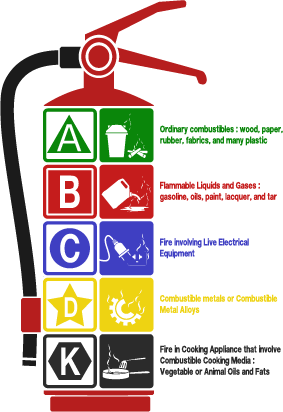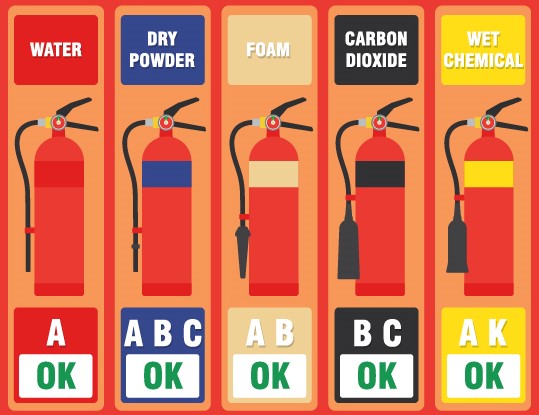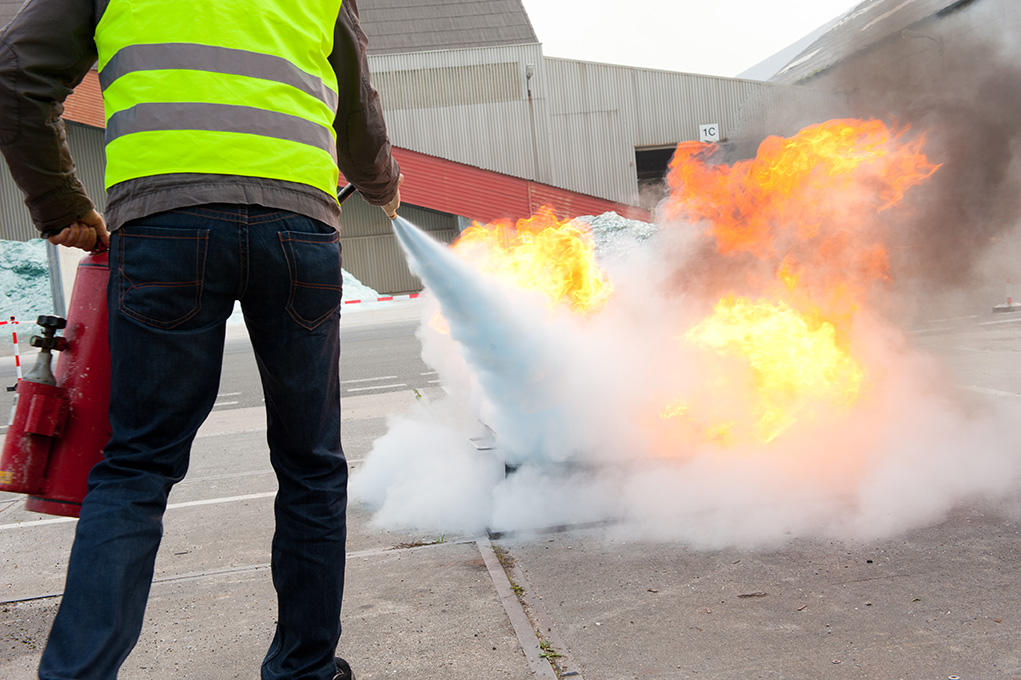The National Fire Protection Association reports more than 1.3 million fires in the US every year. These fires cause more than 3,000 deaths, 15,000 injuries, and $14 billion in property damage annually.
If you encounter a fire, a portable fire extinguisher can help protect you and possibly stop the fire in its tracks. This article covers how portable fire extinguishers work and how to use them.
Secure Your Exit
The first and most important purpose of a portable fire extinguisher is to help people escape. Portable fire extinguishers can clear fire away from your escape route or help keep an exit open for others. You should know where extinguishers are located and how to operate them. This helps ensure safe evacuations.
Fight the Fire
The second purpose of a portable fire extinguisher is to fully extinguish fires. This requires training. Portable fire extinguishers cannot extinguish large fires. Many employers do not want their employees fighting fires no matter the size. If this is the case, the extinguishers in your workplace may only be for protecting escape routes. If your employer wants you to fight small fires, they will train you.
The Five Classes of Fire
Fires are classified based on the fuel they burn:

Types of Fire Extinguishers
Fire extinguishers are rated to fight different classes of fire. Most extinguishers are rated to fight A, B and C fires, but not all. Make sure the fire extinguisher you use will work on the fire you’re facing. The wrong extinguisher could make things worse.

Using Portable Fire Extinguishers
If you encounter a fire, identify your evacuation path first. Find the shortest, most obstacle-free route to an exit, preferably one in the opposite direction from the fire. If a fire blocks your path, use a fire extinguisher to clear the way. Never stay to fight a fire unless you have a clear exit. Next, sound the alarm. Call 911 if you can. Even if it is a fire you can fight, help will already be on the way in case it gets out of hand.
Sizing Up the Fire
If it is your responsibility to fight fires, first determine if it is safe. Small, fully contained fires are usually safe to fight with a portable fire extinguisher. Large, uncontained fires are not safe to fight. Any fire involving highly flammable or hazardous materials isn’t safe to fight. If the fire is too large, or if you don’t know how extensive it is, escape rather than trying to put it out. Take smoke into consideration as well. Most people who die in fires die from smoke inhalation. Escape immediately if the fire is spreading or putting off a lot of heat and smoke.
The Limitations of Portable Fire Extinguishers
Portable fire extinguishers have limitations. First, they don’t have as much “fire-fighting juice” in them as you may think. Second, the discharge distance may not be adequate to keep you safe and the fire at bay. For example:
- A 10 lb. extinguisher has 17-21 seconds of discharge time
- A 35 lb. extinguisher has less than 1 minute of discharge time
- Small extinguishers only reach a distance of about 5 feet
- Larger extinguishers may only reach up to 20 feet
Look for the discharge distance printed on the extinguisher’s side. Finally, consider the condition of the extinguisher. Extinguishers can last from 5 to 15 years. Check the inspection tag to see if it is still in working order. Some have a pressure gauge that tells you if the extinguisher is charged. If the needle is not in the green area, if there isn’t an inspection tag, or if there is visible damage such as a cracked hose or missing lock pin, the extinguisher may not work properly. It may still be better than nothing, but consider it unreliable.
Operating a Fire Extinguisher
To operate a fire extinguisher, there are a few things you need to remember. First, the wrong kind of extinguisher can make the fire worse. Identify the right type of fire extinguisher based on its fire class. Second, all portable fire extinguishers are operated the same way. There are four easy steps, called the P-A-S-S, or “Pass” technique:
- Pull the extinguisher’s pin
- Aim the extinguisher’s nozzle at the base of the fire
- Squeeze the handle
- Sweep spray across the base of the fire

Even if the fire appears to be out, be cautious. Back away from it because it may flare up again. If your fire extinguisher empties before the fire is out, evacuate immediately and wait for the fire department.
Summary
You should now be able to recognize when and how to use a portable fire extinguisher. Remember, portable fire extinguishers have limitations. Make sure you can safely fight a fire. If you can’t, evacuate.
Interested in our Fire Safety Courses? Schedule a free demo!


